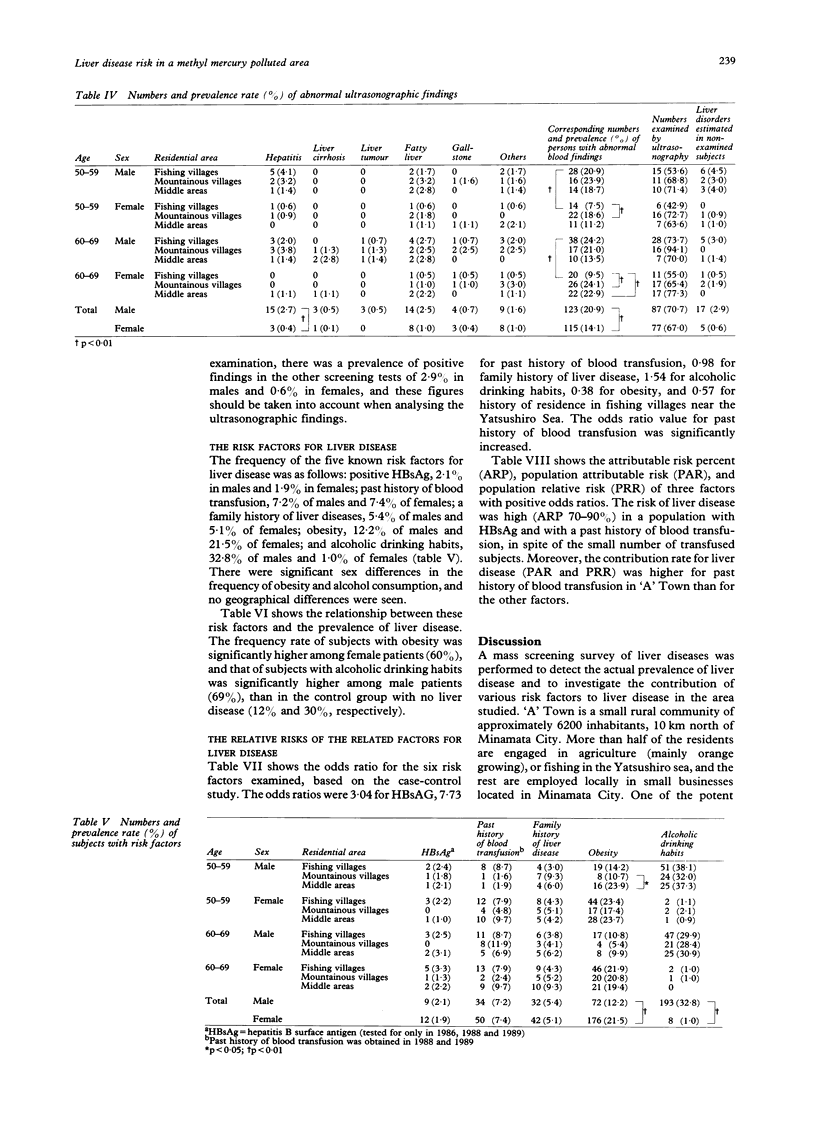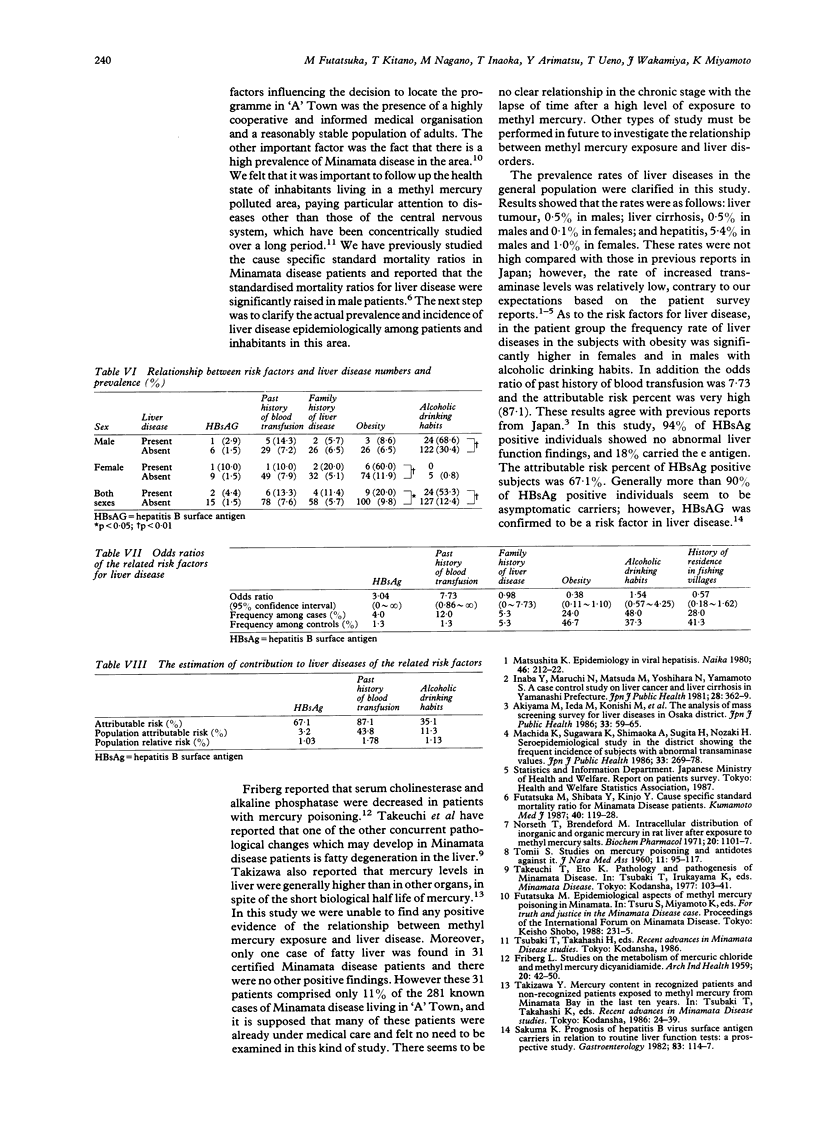Abstract
STUDY OBJECTIVE--The aim was to determine the actual prevalence of liver disease and to investigate the contribution of various risk factors to liver disease among the population in a methyl mercury polluted area. DESIGN--The study was a population based cross sectional mass screening survey. A case-control study was designed to estimate the role of various risk factors for liver diseases. SETTING--The study was confined to a small rural town 10 km north of Minamata City. SUBJECTS--1406 persons aged 50 to 69 years were examined (78.3% of the total population of this age in the locality). MEASUREMENTS AND MAIN RESULTS--Measurements of liver disease were made on the basis of haematological, physical, and ultrasonographic examinations. Data on liver risk factors were collected by questionnaire, and by measurement of body height, weight (obesity), and hepatitis B surface antigen (HBsAg). The prevalence rate of liver tumour was 0.5% in males, liver cirrhosis was found in 0.5% of males and 0.1% of females, and hepatitis was seen in 5.4% of males and 1.0% of females. Frequency rates of risk factors for liver disease among subjects with obesity were significantly higher in the female patient group, and the frequency rate among subjects with alcoholic drinking habits was significantly higher in the male patient group. The odds ratio of past history of blood transfusion showed the highest value among other related factors (7.73) and the attributable risk for this was very high (87.1%); HBsAg was next in rank (odds ratio 3.04; attributable risk 67.1%). CONCLUSIONS--The prevalence of liver disease in this methyl mercury polluted area was not increased, contrary to what was expected based on the standard mortality ratios. The main risk factors for liver disease in this area appear to be alcoholic drinking habits and a history of blood transfusion.
Full text
PDF



Selected References
These references are in PubMed. This may not be the complete list of references from this article.
- FRIBERG L. Studies on the metabolism of mercuric chloride and methyl mercury dicyandiamide; experiments on rats given subcutaneous injections with radioactive mercury (Hg203). AMA Arch Ind Health. 1959 Jul;20(1):42–49. [PubMed] [Google Scholar]
- Norseth T., Brendeford M. Intracellular distribution of inorganic and organic mercury in rat liver after exposure to methylmercury salts. Biochem Pharmacol. 1971 Jun;20(6):1101–1107. doi: 10.1016/0006-2952(71)90339-x. [DOI] [PubMed] [Google Scholar]
- Sakuma K., Takahara T., Okuda K., Tsuda F., Mayumi M. Prognosis of hepatitis B virus surface antigen carriers in relation to routine liver function tests: a prospective study. Gastroenterology. 1982 Jul;83(1 Pt 1):114–117. [PubMed] [Google Scholar]


